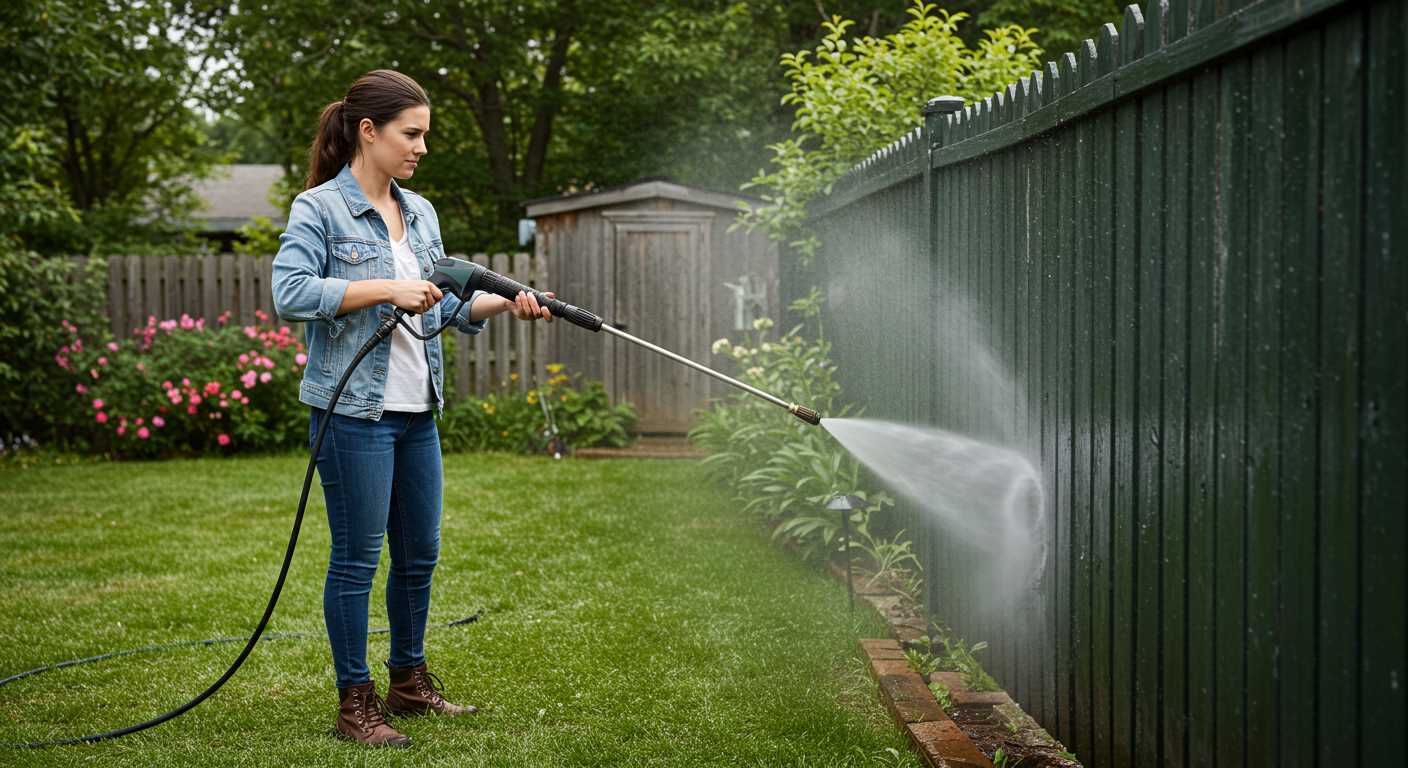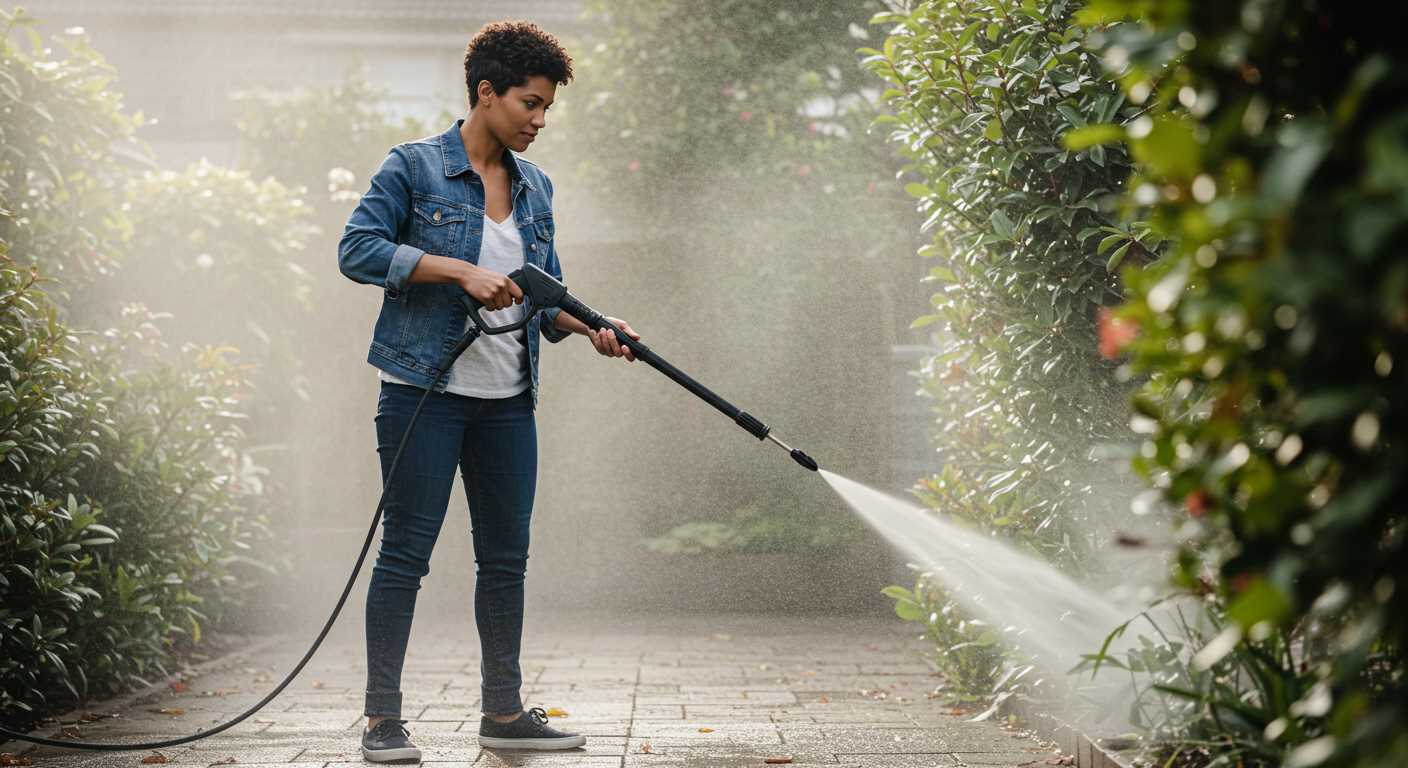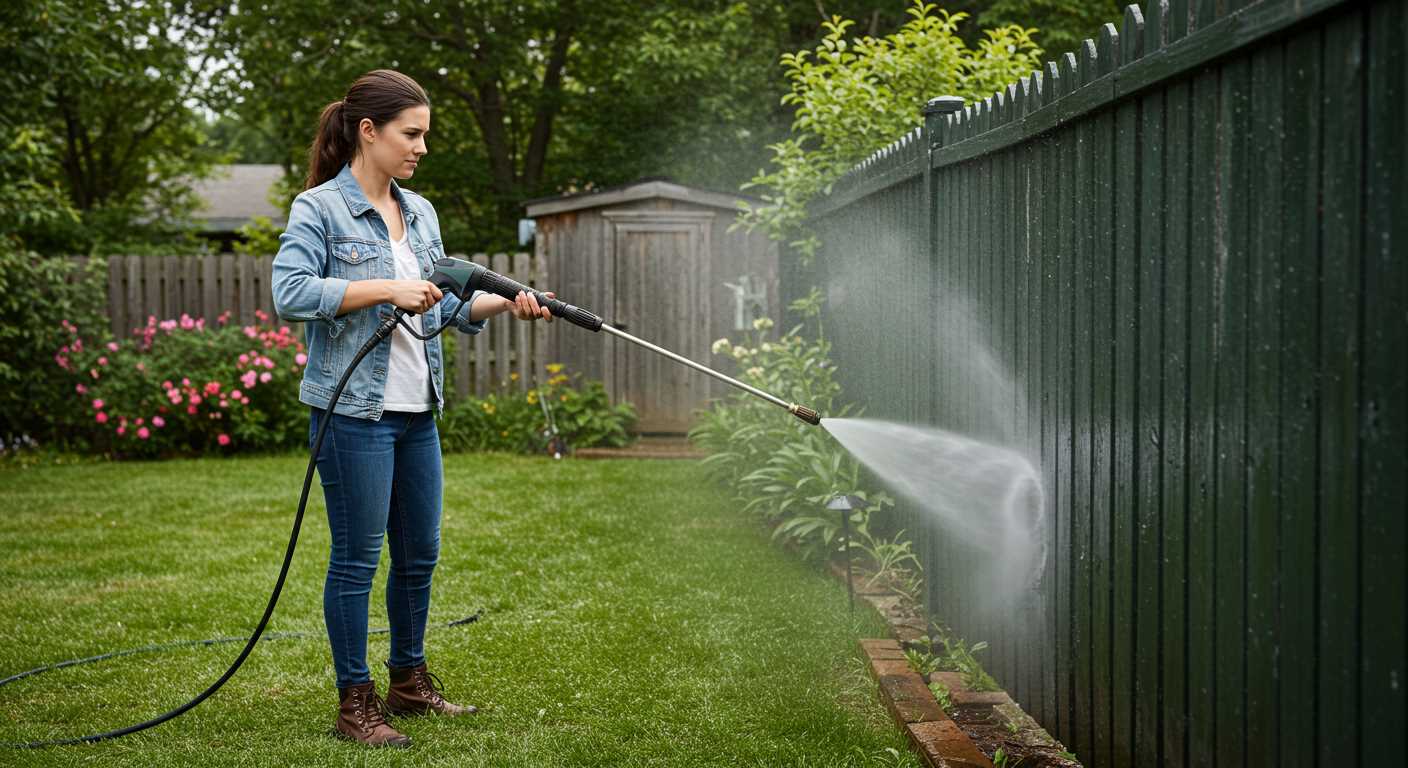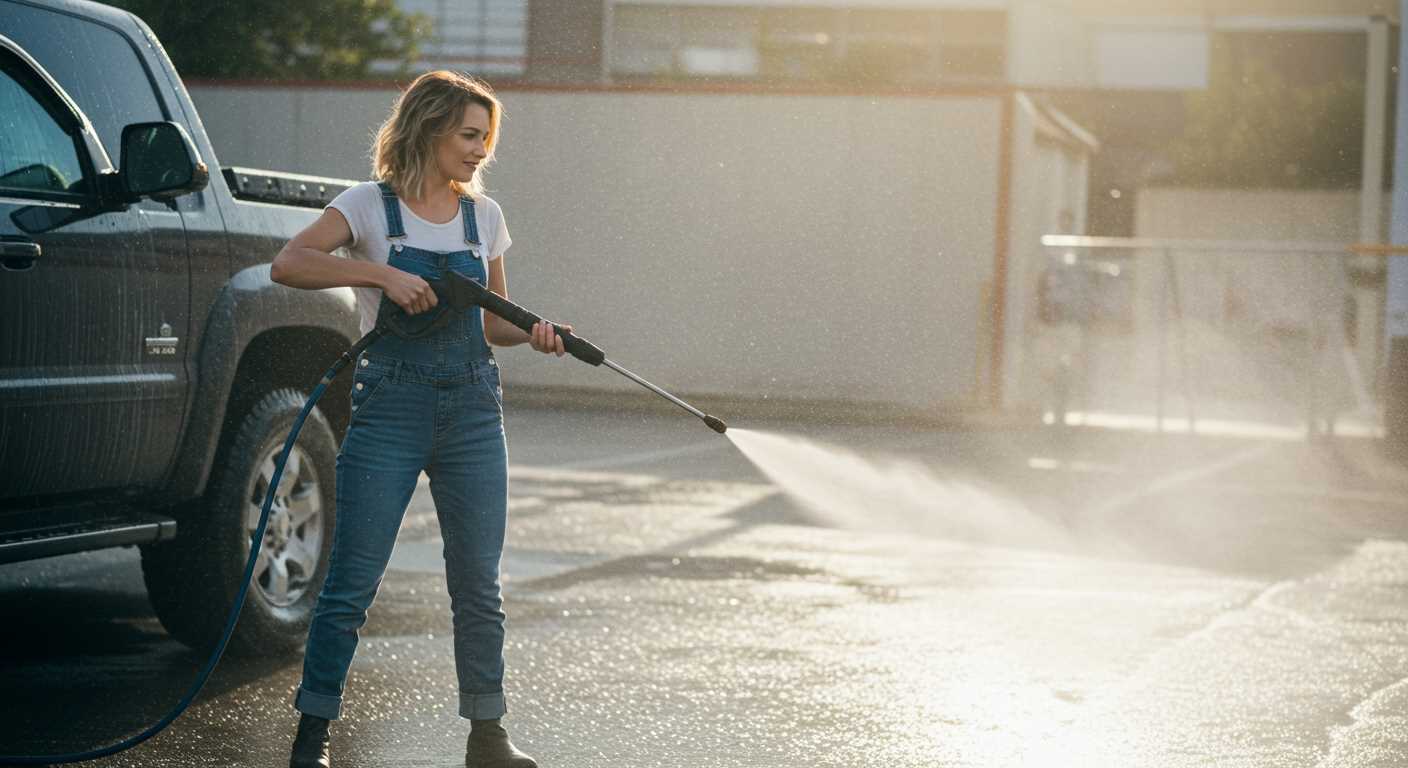




For optimal results, always use a dedicated injector system for combining cleaning agents with the liquid stream. Many models are equipped with an integrated injector that draws the solution directly from a container, ensuring a consistent mix. This setup allows the cleaning product to be introduced into the flow just before it exits the nozzle, maximising its contact with the surface.
In my experience, using a pre-diluted solution can enhance the blending process. I’ve found that concentrated formulas can sometimes lead to clogs or inconsistent application. Mixing ratios provided by manufacturers are typically a reliable guideline, so following those recommendations is key to achieving the best outcome.
Another trick I’ve learned is to adjust the pressure setting according to the type of surface and the cleaning solution being used. For instance, lower pressures are often more effective with delicate surfaces when using specific detergents, allowing for better absorption and less risk of damage. Keep an eye on the foam produced; a rich lather indicates effective interaction between the cleaning agent and the liquid.
When cleaning large areas, consider working in sections. Applying the mixture to smaller zones prevents premature drying and allows for more thorough cleaning. After application, let the solution sit for a few minutes to break down grime before rinsing. This step can make a significant difference in the final results.
Understanding the Detergent Injection System
For optimal cleaning results, selecting a unit equipped with a dependable detergent injection system is key. This mechanism ensures that cleaning agents are seamlessly introduced into the flow of liquid, thus enhancing the overall cleaning efficiency. My experiences have shown that different models employ varied methods to achieve this integration.
Types of Injection Systems
The two primary types I’ve encountered are downstream and upstream injection systems. Downstream systems draw cleaning solutions from a reservoir into the water stream after it exits the pump. This method is advantageous, as it prevents any potential damage to the pump caused by harsh chemicals. In contrast, upstream systems mix detergents before they enter the pump, which can offer stronger cleaning power but requires careful selection of compatible solutions to avoid pump damage.
Factors to Consider
When evaluating these systems, consider the compatibility of cleaning agents. Some units can handle a wider range of solutions without compromising performance. Additionally, ease of switching between different cleaning supplies can significantly improve efficiency during tasks. I once faced a situation where I had to switch from a heavy-duty degreaser to a mild detergent quickly. A well-designed injector system made this transition seamless, allowing me to complete the job effectively.
For those looking to enhance their cleaning arsenal, exploring products like the best air scrubber for construction dust can complement the benefits of a robust detergent injection system. This combination can tackle even the most challenging cleaning scenarios with ease.
Types of Detergents Suitable for High-Pressure Cleaners
For optimal performance of cleaning machines, selecting the right cleaning agents is crucial. Here are some categories that I recommend based on years of hands-on experience:
Biodegradable Cleaners

These products are eco-friendly and break down quickly in the environment. Ideal for outdoor surfaces, they minimise ecological impact while delivering effective cleaning results. Some popular options include:
- Plant-based formulations
- Citrus-based cleaners
- Natural enzyme cleaners
Commercial-Grade Solutions
For heavy-duty tasks, professional-grade formulations provide powerful cleaning action. These are often concentrated and may require dilution prior to use. Here are types to consider:
- Alkaline cleaners for grease and oil removal
- Acidic solutions for mineral deposits and rust
- Foaming agents for vertical surfaces
Always verify compatibility with your model before selecting a cleaning agent. This helps avoid damage and ensures optimum cleaning results.
Influence of Pressure and Flow Rate on Detergent Mixing
Optimising the combination of force and volume is key to achieving the right blend of cleaning agents. Higher pressure typically enhances the penetration and effectiveness of the solution, ensuring it reaches deeper into surfaces. From my experience, too much force can lead to oversaturation, resulting in wasted product and potential surface damage. A balanced approach works best.
Flow rate also plays a significant role. A higher flow rate can dilute the cleaning agent too much, reducing its efficacy. For instance, I once tested a unit with a very high flow rate and a low concentration of cleaner. Instead of a thorough clean, I ended up with more foam than actual cleansing action. Finding the sweet spot is crucial.
| Pressure (psi) | Flow Rate (GPM) | Detergent Mixing Effectiveness |
|---|---|---|
| 1500 | 1.5 | Good |
| 2000 | 2.0 | Optimal |
| 2500 | 2.5 | Excessive Foaming |
Some products are specifically formulated to work better at certain pressures and flow rates. I found that using a concentrated solution at lower pressure often yields better results than a diluted mix at high pressure. Always check the manufacturer’s recommendations for the best outcomes.
In practice, adjusting these parameters while observing the results can lead to improved cleaning performance. Experimentation is part of the process, and understanding how these variables interact is essential for achieving the best possible results.
Step-by-step process of detergent blending
To achieve optimal cleaning results, following a precise procedure for mixing cleaning solutions is crucial. Here’s how to ensure a seamless integration of cleaning agents into your system:
- Gather Equipment: Ensure you have your cleaning machine, the right cleaning solution, and personal protective gear.
- Check the Injection System: Inspect the injector for any blockages or wear. A clean injector guarantees smooth flow and effective mixing.
- Prepare the Detergent: Dilute concentrated cleaners according to manufacturer specifications. Using the appropriate concentration maximises efficiency.
- Connect the Solution Tank: Attach the detergent container to the designated inlet on your machine. Ensure a secure fit to prevent leaks.
- Adjust the Settings: Configure the machine settings for the type of cleaning solution being used. Some systems may require adjusting the pressure or flow settings.
- Start the Machine: Power on your equipment and allow it to reach operational pressure. This initiation phase is vital for proper mixing.
- Engage the Trigger: Pull the trigger gun to initiate flow. Observe the mixture; a consistent stream indicates effective blending.
- Monitor Application: As you clean, watch for even distribution. If the solution isn’t dispersing evenly, check for clogs or adjust the dilution.
- Rinse Thoroughly: After application, rinse surfaces to remove any residual chemicals. This step ensures that no traces remain that could damage surfaces.
Tips for Effective Mixing
- Always refer to the cleaning solution label for guidelines on use and dilution.
- Experiment with different solutions on small areas to determine the best results.
- Regularly clean and maintain your injection system for optimal performance.
Personal Insights
In my experience, taking the time to understand each cleaning agent’s properties makes a significant difference. I recall a project where I underestimated the importance of dilution. A too-strong solution led to surface damage, which could have been avoided with careful preparation. Ensuring correct mixing not only enhances cleaning effectiveness but also prolongs the life of both the equipment and the surfaces being cleaned.
Common issues with detergent mixing in pressure cleaners
One of the frequent problems encountered involves improper mixing of cleaning solutions, leading to ineffective results. A common cause is using the wrong type of cleaning agent. Always check compatibility; some products may clog the system or fail to mix correctly.
Another issue arises from the injector being blocked. This often happens after prolonged use without maintenance. Regularly inspect and clean the injector to ensure smooth operation. I recall a time when a client struggled with stubborn stains due to a clogged injector; a simple cleaning restored the machine’s functionality.
Inconsistent flow can also affect how well the agent combines. If the water flow is too low, it may not draw the cleaning agent effectively. Ensure the water supply is adequate and check hoses for kinks or blockages. I once encountered a situation where a client had low pressure due to a kinked hose, resulting in poor detergent application.
The temperature of the water plays a significant role, too. Cold water may not activate certain cleaning agents properly. If using a solution intended for hot water, verify the temperature settings on your equipment. On one occasion, I witnessed a user struggling with a lichen remover; switching to hot water made all the difference. For more tips on lichen removers, check this lichen remover for paving stones important information and tips.
Finally, always ensure correct dilution ratios. Using concentrated solutions without proper dilution can lead to excessive foam, making it hard for the system to work correctly. During a demonstration, I once had to deal with a foamy mess caused by incorrect mixing–a valuable lesson learned. Following manufacturer guidelines for dilution will save time and effort in the long run.
Maintenance tips for optimal detergent performance
Rinse the detergent tank regularly to prevent residue build-up. I’ve seen many units suffer simply because users neglect this step. After extended use, leftover soap can harden, leading to clogs in the injector system.
Always select the correct dilution ratio as per the manufacturer’s recommendations. In my experience, using a stronger concentration than required doesn’t yield better results; it can actually hinder performance by creating excess foam that’s difficult to rinse away.
Inspect hoses and connections for leaks that could affect the mixing ratio. I once dealt with a machine that had a minor leak in the detergent line, which drastically reduced its cleaning power. Tightening connections or replacing worn hoses can make a significant difference.
Clean the injector nozzle periodically. A simple soak in warm soapy water followed by a gentle scrub can restore flow. I had a nozzle clogged with soap scum once, and it took mere minutes to fix, saving me hours of frustration.
Store cleaning agents in a cool, dry place. Exposure to extreme temperatures can alter their chemical composition, reducing efficiency. A colleague of mine learned this the hard way after leaving detergent in a hot garage during summer.
Regularly check the o-rings and seals for wear. These small components play a big role in maintaining the integrity of the system. I’ve replaced many seals over the years, and it’s always amazed me how a tiny part can lead to significant issues if overlooked.
Lastly, always flush the system with clean water after use. This simple act prevents any leftover chemicals from corroding internal components and ensures optimal performance for your next cleaning task. I’ve built this habit over the years, and it’s paid off in the longevity of my equipment.
Comparing Built-in Versus External Detergent Systems
For anyone serious about cleaning, choosing between integrated and external solutions for soap application can significantly impact your results. My experience has shown that while built-in systems are convenient, external options often provide superior flexibility and performance.
Built-in Systems
These setups draw cleaning agents directly from a reservoir within the unit. The main advantage I’ve noticed is ease of use; you simply fill the tank, and the machine takes care of the mixing. However, I’ve encountered limitations with these systems. The tank capacity is often small, which means frequent refills during larger jobs. Additionally, the type of cleaning agent you can use might be restricted to what the manufacturer recommends, limiting your options for specific tasks.
External Systems
In contrast, external systems allow for much greater versatility. You can connect a separate container to the cleaning unit, opening up a wider range of products. I’ve used this method for tackling tough grease stains and found that using concentrated formulas made a noticeable difference. Adjusting the dilution ratio is straightforward, making it easy to customise the mixture for different surfaces. One downside is the potential for a mess if not set up properly, but with a bit of practice, it becomes second nature.
In my years of testing various models, I’ve consistently found that external systems deliver enhanced cleaning efficiency, particularly for specialised tasks. If you’re looking to achieve the best results, investing in an external setup is often worth the effort. It’s all about choosing the right solution for your cleaning needs.
Best practices for using detergent with pressure washers
Choosing the right concentration for your cleaning agent is paramount. I often see users mixing too much soap, thinking it enhances cleaning power. In reality, it can cause residue buildup on surfaces and in the unit. Stick to the manufacturer’s recommendations for dilution ratios, typically around 1:10 for most applications. This ensures effective cleaning without the risk of damage.
Apply the solution from a distance of about 2-3 feet. This distance helps prevent oversaturation and allows the product to adhere to surfaces effectively. I learned this the hard way when I used to spray too close, causing streaks and requiring more time to redo the job.
Timing is key. Let the cleaning agent sit for 5 to 10 minutes before rinsing. This dwell time allows the solution to break down grime, making the rinse more effective. Just avoid letting it dry on the surface, as that can lead to spotting or even damage.
Switching between different cleaning agents? Always flush the system with clean water before changing products. Mixing different chemicals can lead to unwanted reactions or clogs. I make it a habit to run a few minutes of water through the system between different applications.
Regularly inspect your nozzle. The wrong nozzle can affect both the pressure and the detergent application. I once used a narrow nozzle when a wider one was needed, resulting in poor mixing and uneven cleaning. A 25-degree nozzle is typically a good choice for detergent application, providing a balanced spray pattern.
Store your cleaning solutions properly, away from extreme temperatures, to maintain their effectiveness. I’ve had bottles freeze in winter, which rendered them useless. Keeping them in a climate-controlled environment ensures they remain functional when you need them.
Lastly, always wear protective gear when handling chemicals. I’ve seen firsthand the importance of gloves and goggles. The right precautions can prevent accidents and keep you safe while achieving that sparkling clean finish.





.jpg)

.jpg)


